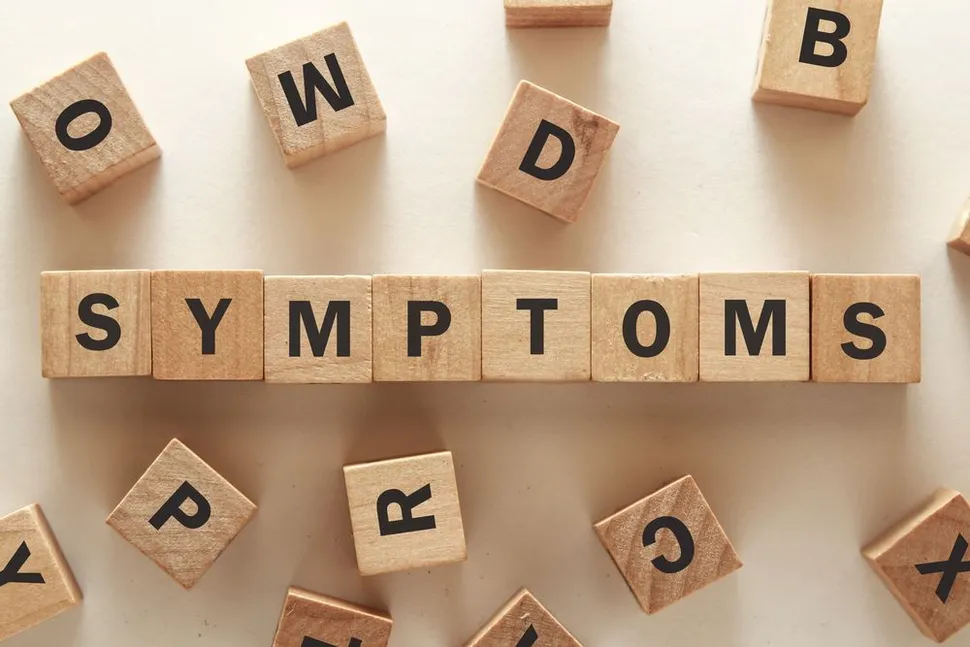How Can I Expect to Feel with Myelofibrosis?

When diagnosed with a health disorder, some of your first questions may be, “How am I going to feel? What are the symptoms? How is this going to affect my day-to-day life?” There is much to learn, but the impact on your health is an ideal place to start.
As you may know, myelofibrosis is a rare type of blood cancer. Essentially, the bone marrow − the center of blood-cell production − is making too many blood cells, which causes the marrow to be replaced by fibrous scar tissue (in a process called “fibrosis”). This overproduction was initiated by a genetic mutation, and now mutated cancer cells are replicating while also preventing the creation of healthy cells.
There are two types of myelofibrosis: primary, which occurs on its own, and secondary, which arises from other blood disorders. The symptoms of primary and secondary myelofibrosis are the same.
What Bodily Changes Are Caused by Myelofibrosis?
Let’s talk about typical symptoms. Myelofibrosis usually progresses slowly, and sometimes many years pass without major symptoms developing. About one-third of people will have no symptoms during the early stages, but as the condition progresses, symptoms arise, such as:
- Most common symptoms: anemia, fatigue, enlarged spleen
- Bleeding and bruising easily
- Bone or joint pain (achy or tender)
- Fever
- Frequent infections
- Itchiness (pruritus)
- Loss of appetite and weight loss
- Night sweats
- Stomach discomfort or pain
The disease course varies widely from person to person; similarly, symptoms depend on the individual. The most common symptoms − anemia, fatigue, and enlarged spleen − are the classic presentation at the time of diagnosis.
How Might Symptoms Change as Myelofibrosis Progresses?
Myelofibrosis might worsen over time, causing anemia and the accompanying fatigue to become severe. The enlarged spleen may become noticeable, causing pain or discomfort in your abdomen or below your left ribs. You may also feel full even when you have eaten very little. Other symptoms may also worsen. However, many therapies are available, and your physician will work with you to devise a beneficial combination.
Keep in mind that myelofibrosis is rare, so if you have any of these symptoms, the cause is probably something else.
Recently there has been some talk about the “hallmarks” of myelofibrosis, mainly in the content produced by a pharmaceutical company studying a medication. One of the proposed “hallmarks” is “symptoms of the disease,” an overly broad category that may make sense for clinical trial results but is unlikely to be valuable for people seeking information about their disease. You are more likely to be helped by knowing which are the most common symptoms (as listed above) and which are the core disease mechanisms of myelofibrosis (described above).
What Treatments Are Approved For Myelofibrosis In 2024?
Medicines currently approved by the US Food and Drug Administration specifically to treat myelofibrosis are:
- JAK inhibitors (ruxolitinib, brand name Jakafi) and other kinase inhibitors like: fedratinib (Inrebic), pacritinib (Vonjo), and momelotinib (Ojjaara)
Other medications can help myelofibrosis by decreasing cancer cell counts, and symptom burden such as:
- Immunomodulatory agents include monoclonal antibodies, cytokines, and vaccines that help improve the immune system’s ability to fight cancer cells.
- Chemotherapy drugs that lessen symptoms related to high blood cell counts.
There are other treatments that relieve specific symptoms:
- Allopurinol: to reduce uric acid in the blood and address joint tenderness
- Over-the-counter (nonprescription) medications: to address itchiness, appetite loss, and fever
If you want to keep reading about myelofibrosis treatment options, you can continue reading our Myelofibrosis 101 page: What Are Treatments For Myelofibrosis?
What Are Treatments For Enlarged Spleen?
An enlarged spleen is a common symptom in myelofibrosis, and is linked to an abnormal production of blood cells outside the bone marrow called extramedullary hematopoiesis.
- Immunomodulatory drugs
- Chemotherapy drugs (interferon, cladribine, hydroxyurea)
- Splenectomy (surgery that removes the spleen)
- Radiation therapy
- Antibiotics
What are Treatments for Anemia?
Anemia is another common manifestation of myelofibrosis. It can be the result of fibrosis in the bone marrow that occupies space and reduces the production of new red blood cells or that the spleen, by being enlarged, traps more red blood cells and destroys them. There are however strategies that focus on increasing the red blood cell counts.
- Erythropoiesis-stimulating agents (red blood cell production stimulating agents)
- Folic acid: a vitamin that helps the body produce healthy red blood cells
- Blood transfusions: to boost the of red blood cell counts and address fatigue
- Androgens: to boost the production of red blood cells
- Corticosteroids
What Are The Benefits of a Flexible Mindset?
While the initial response to some treatments can be excellent, the response may wane, and symptoms return. This is not uncommon. It is important to maintain excellent communication with your healthcare providers about what you are experiencing so that doses may be changed or alternate medicines tried. Very important studies are underway to help you live with myelofibrosis. You can learn more in our comprehensive article: How Can Patient Navigators Help Me Access Cancer Care?
Join the HealthTree for Myelofibrosis community to continue learning about myelofibrosis, available therapies, and ongoing research!
If you are interested in participating in or finding a clinical trial, locating a myelofibrosis specialist, or staying informed about updates and conferences on myelofibrosis, you can subscribe to the biweekly newsletter.
Sources:
When diagnosed with a health disorder, some of your first questions may be, “How am I going to feel? What are the symptoms? How is this going to affect my day-to-day life?” There is much to learn, but the impact on your health is an ideal place to start.
As you may know, myelofibrosis is a rare type of blood cancer. Essentially, the bone marrow − the center of blood-cell production − is making too many blood cells, which causes the marrow to be replaced by fibrous scar tissue (in a process called “fibrosis”). This overproduction was initiated by a genetic mutation, and now mutated cancer cells are replicating while also preventing the creation of healthy cells.
There are two types of myelofibrosis: primary, which occurs on its own, and secondary, which arises from other blood disorders. The symptoms of primary and secondary myelofibrosis are the same.
What Bodily Changes Are Caused by Myelofibrosis?
Let’s talk about typical symptoms. Myelofibrosis usually progresses slowly, and sometimes many years pass without major symptoms developing. About one-third of people will have no symptoms during the early stages, but as the condition progresses, symptoms arise, such as:
- Most common symptoms: anemia, fatigue, enlarged spleen
- Bleeding and bruising easily
- Bone or joint pain (achy or tender)
- Fever
- Frequent infections
- Itchiness (pruritus)
- Loss of appetite and weight loss
- Night sweats
- Stomach discomfort or pain
The disease course varies widely from person to person; similarly, symptoms depend on the individual. The most common symptoms − anemia, fatigue, and enlarged spleen − are the classic presentation at the time of diagnosis.
How Might Symptoms Change as Myelofibrosis Progresses?
Myelofibrosis might worsen over time, causing anemia and the accompanying fatigue to become severe. The enlarged spleen may become noticeable, causing pain or discomfort in your abdomen or below your left ribs. You may also feel full even when you have eaten very little. Other symptoms may also worsen. However, many therapies are available, and your physician will work with you to devise a beneficial combination.
Keep in mind that myelofibrosis is rare, so if you have any of these symptoms, the cause is probably something else.
Recently there has been some talk about the “hallmarks” of myelofibrosis, mainly in the content produced by a pharmaceutical company studying a medication. One of the proposed “hallmarks” is “symptoms of the disease,” an overly broad category that may make sense for clinical trial results but is unlikely to be valuable for people seeking information about their disease. You are more likely to be helped by knowing which are the most common symptoms (as listed above) and which are the core disease mechanisms of myelofibrosis (described above).
What Treatments Are Approved For Myelofibrosis In 2024?
Medicines currently approved by the US Food and Drug Administration specifically to treat myelofibrosis are:
- JAK inhibitors (ruxolitinib, brand name Jakafi) and other kinase inhibitors like: fedratinib (Inrebic), pacritinib (Vonjo), and momelotinib (Ojjaara)
Other medications can help myelofibrosis by decreasing cancer cell counts, and symptom burden such as:
- Immunomodulatory agents include monoclonal antibodies, cytokines, and vaccines that help improve the immune system’s ability to fight cancer cells.
- Chemotherapy drugs that lessen symptoms related to high blood cell counts.
There are other treatments that relieve specific symptoms:
- Allopurinol: to reduce uric acid in the blood and address joint tenderness
- Over-the-counter (nonprescription) medications: to address itchiness, appetite loss, and fever
If you want to keep reading about myelofibrosis treatment options, you can continue reading our Myelofibrosis 101 page: What Are Treatments For Myelofibrosis?
What Are Treatments For Enlarged Spleen?
An enlarged spleen is a common symptom in myelofibrosis, and is linked to an abnormal production of blood cells outside the bone marrow called extramedullary hematopoiesis.
- Immunomodulatory drugs
- Chemotherapy drugs (interferon, cladribine, hydroxyurea)
- Splenectomy (surgery that removes the spleen)
- Radiation therapy
- Antibiotics
What are Treatments for Anemia?
Anemia is another common manifestation of myelofibrosis. It can be the result of fibrosis in the bone marrow that occupies space and reduces the production of new red blood cells or that the spleen, by being enlarged, traps more red blood cells and destroys them. There are however strategies that focus on increasing the red blood cell counts.
- Erythropoiesis-stimulating agents (red blood cell production stimulating agents)
- Folic acid: a vitamin that helps the body produce healthy red blood cells
- Blood transfusions: to boost the of red blood cell counts and address fatigue
- Androgens: to boost the production of red blood cells
- Corticosteroids
What Are The Benefits of a Flexible Mindset?
While the initial response to some treatments can be excellent, the response may wane, and symptoms return. This is not uncommon. It is important to maintain excellent communication with your healthcare providers about what you are experiencing so that doses may be changed or alternate medicines tried. Very important studies are underway to help you live with myelofibrosis. You can learn more in our comprehensive article: How Can Patient Navigators Help Me Access Cancer Care?
Join the HealthTree for Myelofibrosis community to continue learning about myelofibrosis, available therapies, and ongoing research!
If you are interested in participating in or finding a clinical trial, locating a myelofibrosis specialist, or staying informed about updates and conferences on myelofibrosis, you can subscribe to the biweekly newsletter.
Sources:
about the author
Jacqueline M. Mahon, MA
Jacqueline is delighted to be writing for HealthTree Foundation. She has extensive experience working in blood cancers as well as other oncologic and therapeutic areas. When not writing, she may be gardening, hiking, or playing with her rescue cat, Merlin.
More on Navigating Your Health
Get the latest thought leadership on your Myeloproliferative Neoplasm delivered straight to your inbox
Subscribe to the weekly newsletter for news, stories, clinical trial updates, and helpful resources and events with cancer experts.











